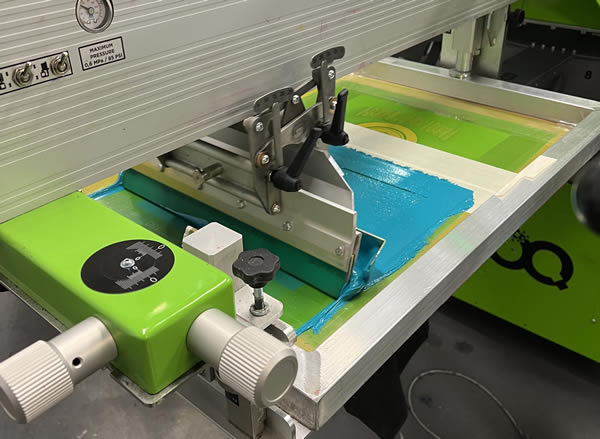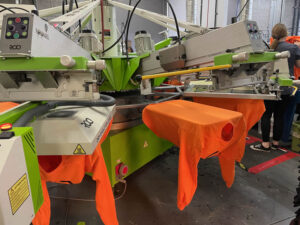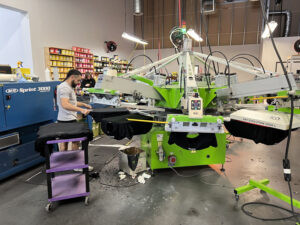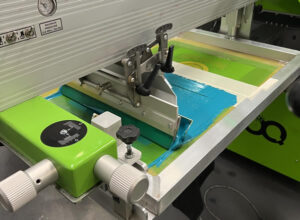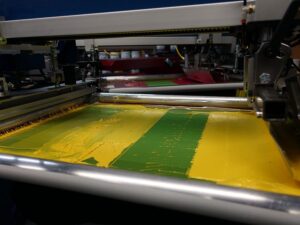Screen printing is a versatile and popular method of printing used in a wide range of applications, including textiles, ceramics, and paper products. The process involves transferring ink through a stencil, or “screen,” onto a substrate, resulting in a precise and high-quality print.
The first step in screen printing is creating the stencil, which can be done using a variety of methods. One common technique is to create a design using graphic design software and then print it onto a transparent film. The film is then placed onto a coated mesh screen and exposed to light, which causes the emulsion on the screen to harden and create a stencil of the design.
Once the stencil is created, the screen is placed onto the substrate, and ink is applied using a squeegee. The ink passes through the open areas of the stencil, creating a sharp and clean print. The process can be repeated for multiple colors, with each color requiring a separate stencil and screen.
One of the advantages of screen printing is its ability to produce vibrant and durable prints. The ink used in screen printing is specially formulated to bond with the substrate, creating a long-lasting and high-quality print. This makes it a popular choice for printing on fabrics, such as t-shirts and other apparel items.
Screen printing is also a versatile method of printing, as it can be used on a wide range of substrates, including paper, plastics, and metal. This makes it a popular choice for printing packaging materials, such as boxes and bags.
Another advantage of screen printing is its ability to create intricate designs with precise detail. This is particularly useful in printing logos and other branding materials, as it allows for sharp and accurate reproduction of complex designs.
Despite its many advantages, screen printing does have some limitations. One of the main challenges is the setup time required for each color and design. Each color requires a separate stencil and screen, and the process of aligning each screen can be time-consuming and challenging. This makes it less suitable for short runs or designs with a large number of colors.
In conclusion, screen printing is a versatile and popular method of printing that offers a range of benefits, including vibrant and durable prints, precise and intricate designs, and the ability to print on a wide range of substrates. Despite its setup challenges, it remains a popular choice for printing on textiles, packaging materials, and other products.

